An Israeli legislation committee unanimously approved a law/ bill that may/ will sanction more than 66 “Illegal” Israeli outposts and/ or neighborhoods in settlements built without “proper” authorization in the occupied West Bank territory during the past 20 years. The bill is intended to withhold any possible demolition of the outposts or the unauthorized neighborhoods in settlements; as it allows 2 years grace period for the “Israeli government” to decide their status.
The proposed bill also requires the government/ the Israeli Civil Administration to provide such locations with the entire infrastructure necessary to their survival: water, electricity, roads, etc. in spite of the fact that many of the established outposts are already linked to the infrastructure system from the nearby ”mother settlement”. Even-more, the bill requires the Israeli finance minister to facilitate mortgages to purchase an apartment or a house; and even though the outposts and neighborhoods branded “illegal” they still receive budgets on a regular basis from various sources; including the government and the settlements’ regional council in the West Bank.
The Palestinian – Israeli “Peace” process has been in play for nearly 3 decades with direct involvement of the international community that proceeded with all the efforts to reach a peaceful solution to the conflict. Yet, the only consistence that everyone witnessed during that time was Israel’s persistence to its long-standing policy to create facts on the ground in violation of agreed accord and the international law.
Israel’s violation of the international law and the United Nations Security Council (UNSC) resolutions started as early as its occupation of the West Bank and Gaza in 1967, when it initiated the settlement program for Israeli settlers in the Occupied Territory, using the pretexts of ”security”, ”natural growth” and historic religious rights, in spite of the fact that it remains an explicit violation of international law. At the time the first Oslo Accord was signed in 1993, Israel had already built 196 settlements of the currently existing 198 and as Israel refused all calls to halt the settlements’ constructions it continued to build using various maneuvering procedures.
However, Israel’s continuous construction was somehow limited and restrained to expansions of existing settlements rather than building new ones. Nonetheless, the need to boost the spread of settlements and increase the settlers presence remained a priority for the occupation, hence the need to break new grounds to establish new “neighborhoods” and annexations to the settlements needed to remain a conscious concept, consequently, the idea to trigger the outposts phenomenon came to be. It was the maneuver of the Israeli occupation government to install the seeds of settlements for when the right time comes to recognize them.
In 1996, following the signing of the 1995 Oslo Peace Accords, the Israeli settlers initiated a new phenomenon that later came to known as ”outposts”. An outpost is created when a group of Israeli settlers takes control of a Palestinian hilltop which is located in close proximity to an existing Israeli settlement (1 mile to 4 miles away) known as the ”mother settlement”. The outposts often consist of only a few caravans and sometime a single tent where young Israeli-Jewish settlers take possession of land by means of forcing realities on the ground and naturally under the protection and the covert assistance of the Israeli occupation Army.
This concept was best described in 1998 by the Israeli Agriculture Minister at that time and former Prime Minister, the late Ariel Sharon when he said; to take as much Palestinian land as possible before “losing them to Palestinians in negotiations”.
| “Everybody has to move, run and grab as many hilltops as they can to enlarge the settlements because everything we take now will stay ours …everything we don’t grab will go to them.”
Ariel Sharon addressing a meeting of militants from the extreme rightwing Tsomet party, Agence France Presse, November 15, 1998. |
In 2002, the Quartet on the Middle East: the United States, the European Union, Russia and the United Nations proposed what came to known as the “Roadmap for peace”, which was set to resolve the Israeli–Palestinian conflict and, in which the former/ late US President George Bush Sr. called for an independent Palestinian state. The final text of the plan was released on 30 April 2003 and was accepted by Sharon and ultimately the government of Israel; under which the latter is obligated to evacuate all of the illegal outposts that were established after March 2001. Moreover, Israel committed under phase1 of the Roadmap to “freezes” all settlements related activities, including the much “argued” natural growth.
In March 2005, Ariel Sharon, the Israeli Prime Minister at the time, attempted to maneuver Israel’s obligations concerning the outposts as it came in the Roadmap. Sharon asked attorney Talia Sasson, former head of the Israeli State Prosecution Criminal Department, to organize an investigative report on the status of the established Israeli outposts in the occupied West Bank. The report acknowledged more than 125 such outposts, one-third of which with ”uncertain status”, and the remaining two-thirds as “governmentally supported” (because of their connection to water and electricity networks. Sasson also disclosed in her report that …….
| all outposts are illegal. It is important to emphasize that it’s not merely to evacuate the outposts but to cease the entire procedure of budgeting and transferring state funds to the outposts. The very heart of the report is about the enforcement of the law, which is not a political issue, but a legal one, of tremendous importance for a democratic state.” |
In the next 13 years to follow the ‘Sasson report’ Israel continues to equivocate its obligation to dismantle the outpost as committed.
On the ground; not only did Israel not proceed with the evacuation; but rather turned a blind eye when the settlers founded new ones; and in some cases dismantled several outposts only to relocate them to other locations with more privileges. The settlers and their government of occupation did not stop at that but went on to calculatedly allocate budgets and invest (new or addition of permanent structures and/ or new caravans) in some of those outposts that were built after March 2001 and were set for evacuation in accordance to the Roadmap. See images 1-3
Neve Daniel North – 2002
Neve Daniel North – 2009
Neve Daniel North – 2017
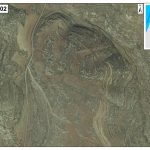
Neve Daniel North – 2002 |
 Neve Daniel North – 2009 Neve Daniel North – 2009 |
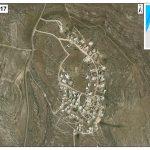 Neve Daniel North – 2017 Neve Daniel North – 2017 |
Images 1-3: The expansion of Neve Daniel North outpost in Bethlehem Governorate throughout the years (2002-2017)
Kida Outposts – 2002
Kida Outposts – 2009
Kida Outposts – 2017
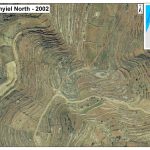
Kida Outposts – 2002 |
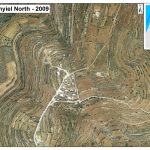 Kida Outposts – 2009 Kida Outposts – 2009 |
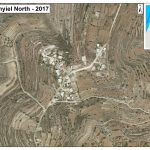 Kida Outposts – 2017 Kida Outposts – 2017 |
Images 4-6: The expansion of Kida outpost in Nablus Governorate throughout the years (2002-2017)
Since the time the outposts phenomena was instigated to date; the Israeli settlers established 220 outposts locations across the occupied West Bank territory; 79 of which were established prior to March 2001, while the remaining 141 were established at a later date. See Map 1
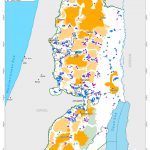 Map 1: Distribution of Israeli outposts in the occupied West Bank
Map 1: Distribution of Israeli outposts in the occupied West Bank
The growing influence and electoral leverage of the settlers and right wing parties, which thrived under Netanyahu’s tenure was notable in 2011 when a policy to sanction illegal construction on the Israeli professed “state land”, and remove such construction on private Palestinian land. Since then, several outposts were legalized and dozens more are in legal process to resolve their status.
In any case the settlers are not worried of any serious action/s against them as long as the government is led by right wing parties, which open the issue for further extension and deliberations. They are also in apathy of any possible upshots for Israel has witnessed the extent of the international community incapacitation to act against them no matter how the Israeli actions adverse the international law.
Prepared by:
The Applied Research Institute – Jerusalem














